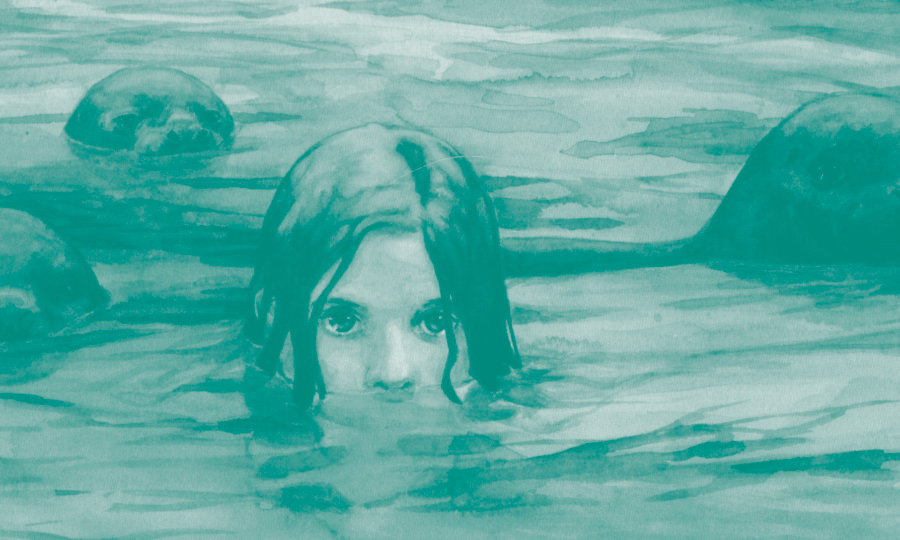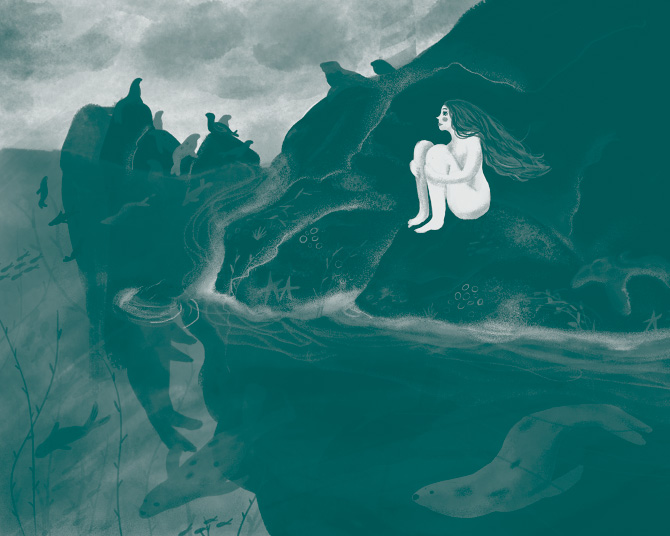
The Scots word selkie is diminutive for selch which strictly speaking means “grey seal” (Halichoerus grypus). Alternate spellings for the diminutive include: selky, seilkie, sejlki, silkie, silkey, saelkie, sylkie, etc. The term “selkie” according to Alan Bruford should be treated as meaning any seal with or without the implication of transformation into human form.
W. Traill Dennison insisted “selkie” was the correct term to be applied to these shapeshifters, to be distinguished from the merfolk, and that Samuel Hibbert committed an error in referring to them as “mermen” and “mermaids”. However, when other Norse cultures are examined, Icelandic writers also refer to the seal-wives as merfolk (marmennlar). There also seems to be some conflation between the selkie and finfolk. This confounding only existed in Shetland, claimed Dennison, and that in Orkney the selkie are distinguished from the finfolk, and the selkies’ abode undersea is not “Finfolk-a-heem”; this notion, although seconded by Ernest Marwick, has been challenged by Bruford.
There is further confusion with the Norse concept of the Finns as shapeshifters, “Finns” (synonymous with finfolk) being the Shetlandic name for dwellers of the sea who could remove their seal-skin and transform into humans according to one native correspondent.





